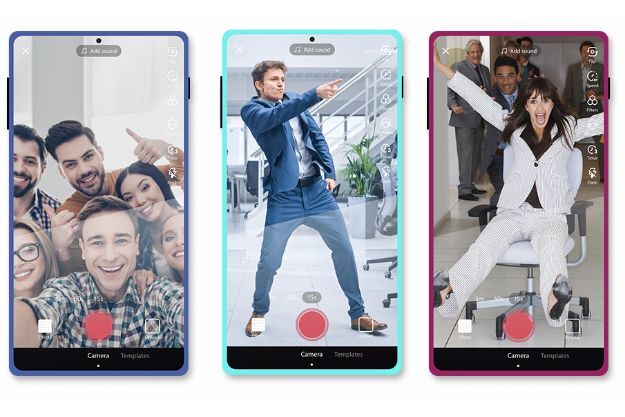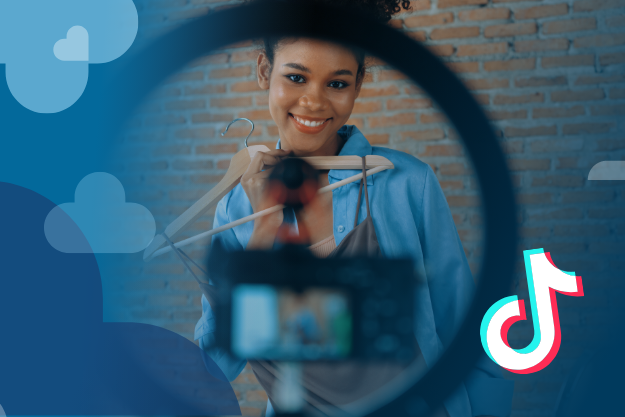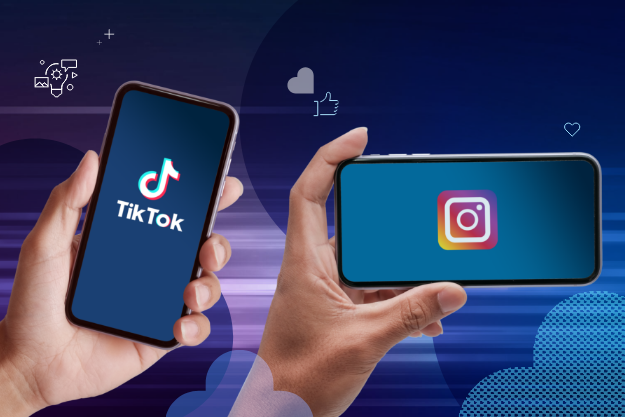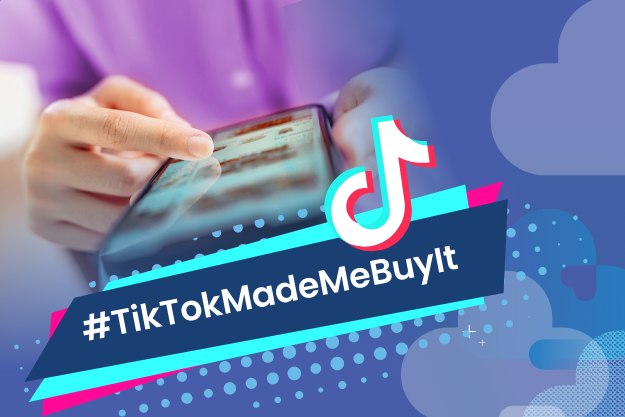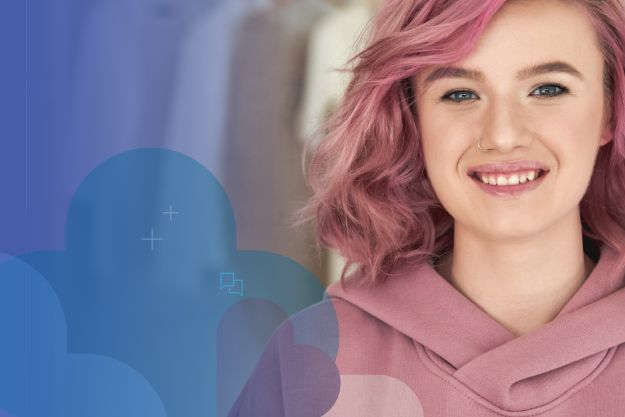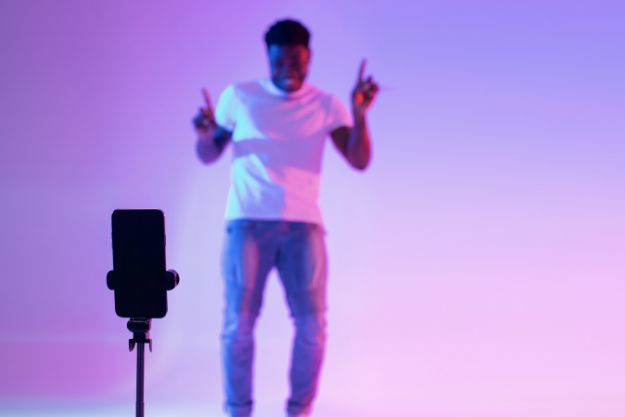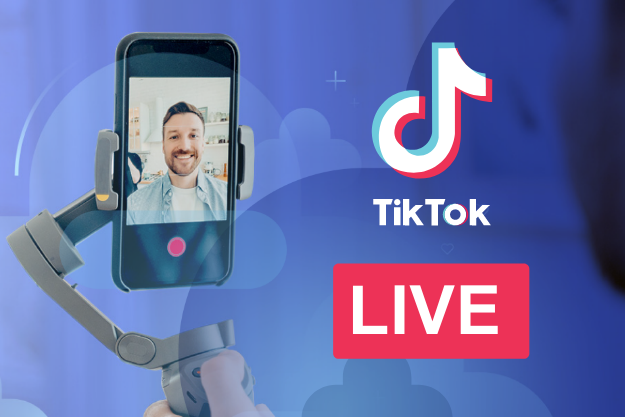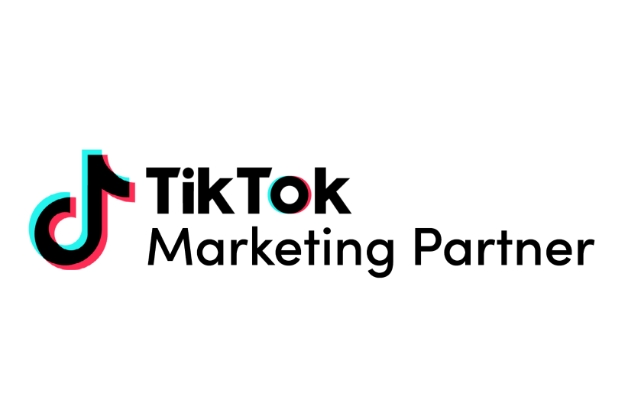TikTok made headlines last year with the announcement of its 1 billion monthly active user milestone. That’s massive growth for a platform that hit the scene as recently as 2016. It’s clear the app has grown beyond its initial user base of teens and young adults – and is now mainstream.
TikTok began picking up massive steam throughout the COVID-19 pandemic. As more and more people were homebound, TikTok became a perfect way for people to share and connect through entertainment. The app became so influential that time spent on TikTok (21.5 hours per month) exceeded the number of hours spent, per user, on Facebook (17.5 hours per month).
But user numbers weren’t the only thing to rise. Once a new platform hits the scene, new content creators emerge. By 2020, TikTok was home to over 106,000 influencers, nearly 7 times more than just two years before.
It’s no secret that influencer marketing is an effective way to reach targeted audiences. We’ve witnessed countless examples of brands utilizing social media influencers to spark discussion and action among current and potential customers.
Instagram has long held the crown as the go-to platform when it comes to influencer collaborations. But with TikTok now on the scene, marketers have the ability to get creative working with new voices and more importantly, reaching new audiences.
If you're weighing the pros and cons of influencer partnerships on TikTok vs Instagram, you’re not alone. Let’s take a look at how you can maximize both platforms.
The value in going viral
Unlike most social platforms that offer likes, comments, and shares, TikTok promotes a host of sharing options, including stitches, duets, creating, saving, and reusing original audio, and of course, challenges. These platform engagement features make it easier for influencers and brands to zero in on user-generated content, which can ultimately lead to successful TikTok influencer collaborations.
With the right content, brands of any size and marketing budget can go viral on TikTok. The platform’s creative approach and overall newness give it a different edge vs. the more polished Instagram we’ve come to know and love.
For example, Dunkin’ endorsed the most followed TikTok star, Charli D’Amelio, and their beverages have appeared in more than 120 of her TikToks. The company even created two drinks named after her. The first beverage, named ”The Charli,” led to a 57% rise in daily app downloads on launch day alone, and a 45% rise in cold brew sales the following day.

Instagram vs. TikTok influencers
When it comes to influencer marketing campaigns, Influencer Marketing Hub reports that 79% of brands today consider Instagram to be the most important platform, increasing from 68% in 2020.
However, TikTok and Instagram are not at odds with each other. Having a variety of influencers to collaborate with is healthy for brands, users, and even the platforms themselves. By being selective of which platforms to use for campaigns, marketers can see even better results.
This also helps account for the spike we are seeing in brands using TikTok. In fact, Influencer Marketing Hub also found that 45% of brands are turning to TikTok.
Here are some of the main advantages brands can benefit from with a TikTok influencer campaign:
Sound selection: TikTok has its own massive audio library, which includes original tracks, hit songs, and even comedy sketches. Influencers can select their own audio, edit, and publish within minutes – all from a mobile device.
Authenticity: Most Instagram content is focused on style and imagery, so it is often edited using professional software for a more polished effect. Meanwhile, TikTok content typically takes a more raw approach, allowing the creator’s personality to really shine through.
Audience size: In 2020, TikTok influencers with 1,000 to 5,000 followers made up 53.5% of TikTok influencer accounts worldwide. Similarly, 54% of Instagram influencers have between 1,000 and 10,000 followers.
Video content: The Instagram aesthetic is focused on a “grid” style. The app promotes certain posts in such a way that users see more than one post at a time. By contrast, TikTok recommends content one video at a time, which encourages users to watch the video in its entirety and increases impressions.
TikTok influencer trends
Some of TikTok’s most popular influencers were once everyday people who gained overnight celebrity on the app. For example, Charli D’Amelio went viral for her dances and now has over 126 million followers and movie roles. There are also dozens of TikTok subcultures, including healthcare, cleaning, moms, and more; each with their own influencers. No matter the type of influencer, they will capitalize on music, dances, jokes, and other trends to increase their visibility and grow their audiences. Dr. Austin Chiang, a gastroenterologist with over 495,000 followers on TikTok, was recently awarded GLAAD’s "TikTok Queer Advocate of the Year." The nominees for this award use the app creatively to promote inclusivity by inspiring and educating their followers. Dr. Chiang and other influencers are creating influential content without fancy studio equipment or highly-edited content.

After viewing sponsored content, 67.9% of those surveyed claim to have purchased a product after seeing it in a post from someone they follow on TikTok. In fact, most influencers (87.1%) see a greater engagement rate on TikTok than on any other social media platform. These engagement rates can translate into social commerce revenue. "TikTok made me buy it," has become a common phrase as a result of countless influencers who have discussed their favorite products – from household items to makeup to clothing and more.
Identifying the ideal influencer
The right influencers can help you grow genuine relationships with your audiences on social media, but finding the right fit is easier said than done.
When it comes to influencer marketing, bigger isn’t always better. In fact, micro-influencers boast up to a 60% increased engagement rate compared to macro-influencers on TikTok. But it’s not just more engagement they’re raking in, it’s real ROI.
But whether you choose to go macro or micro, there is no guarantee your content will make it onto the main feed. Interestingly, TikTok’s algorithm doesn’t give priority to users with higher follower counts and instead favors content based on their video completion rates. As a result, influencers of all sizes have an equal chance to achieve massive reach. It truly comes down to the quality and relevance of the content.
TikTok influencers can connect you with new, engaged audiences
Although TikTok influencer marketing is still in its infancy stage, marketers see big potential in the platform. However, as with any social platform, the recipe to success lies in the mix between engaging branded content and impactful influencer relationships. If a brand is able to partner with influencers who can slide into their followers' feeds in an engaging and seamless way, they will have a much better chance of building audience engagement and trust over time.
Editor's note: This blog post was originally published on Forbes.













